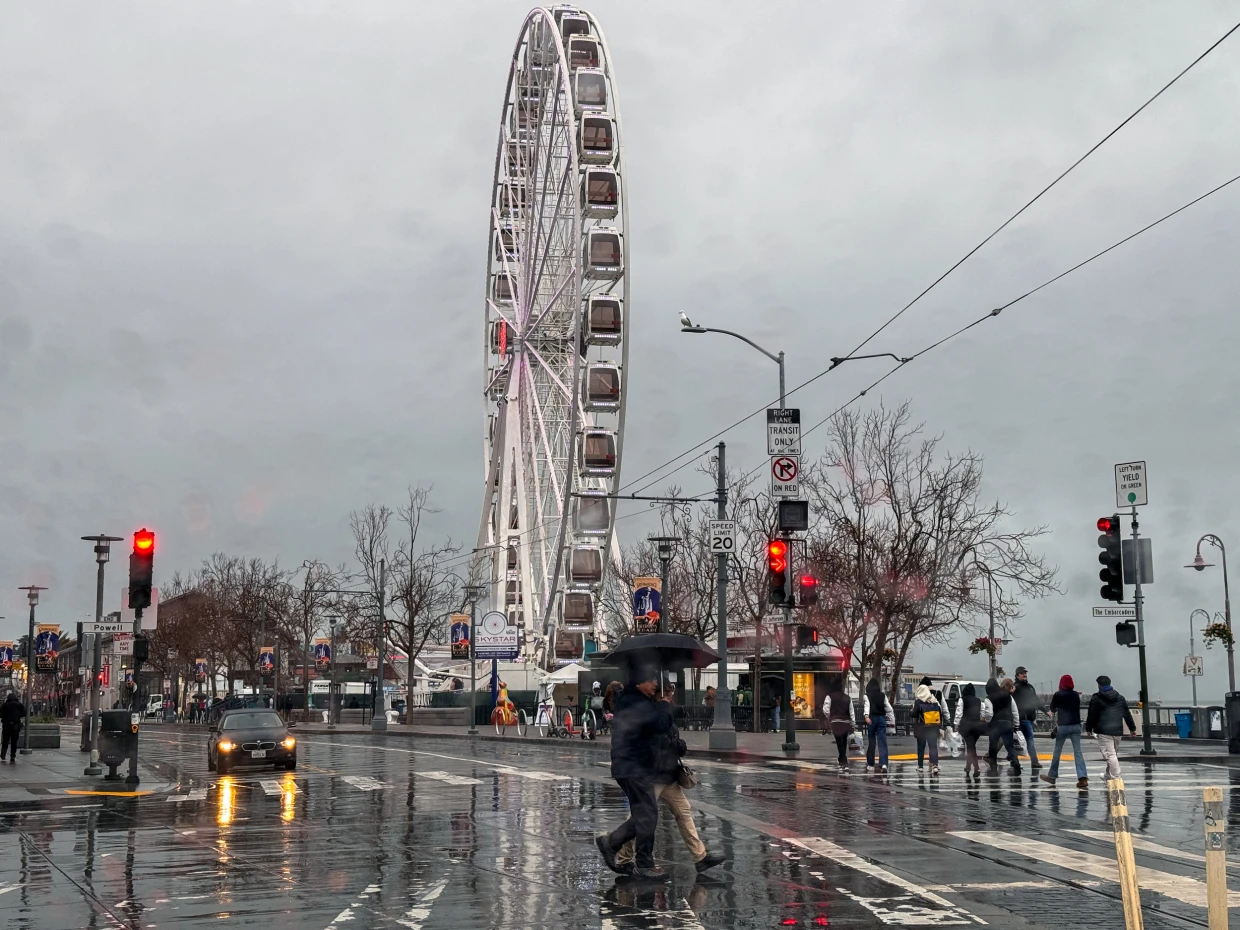Multiple storm systems will move through the West Coast this weekend and into the beginning of the workweek, pummeling California with both rain and snow.
Currently, 26 million people across the state are under flood alerts, including in Los Angeles, Fresno, Sacramento and San Francisco.
The atmospheric river-fueled storms in the West are expected to bring flooding and damaging winds across the region, as well as feet of snow in the mountains.
Late Sunday into Monday is when rainfall rates will peak at 0.5-1 inches per hour. As Monday continues, Californians can expect torrential rain, mountain snow and damaging wind gusts that will continue throughout most of the day before moving east into the Rockies by Tuesday.
The first of the storms already hit the Bay Area and points south on Saturday, with the National Weather Service describing its output mainly as “light rain” and its lifespan as “weakening,” according to a forecast discussion on Saturday.
Light to moderate rain was expected to the south, in San Luis Obispo and Santa Barbara counties, but by the time the system hits Los Angeles late Saturday into Sunday, the chance of light rain was forecast at 20% to 30%, the weather service said.
Widespread rain and mountain snow was expected into the Rockies and Intermountain West by Sunday morning, federal forecasters said.
The Bay Area will see a short lull between the first system and a second, stronger system that will include another atmospheric river, a firehose of precipitation that streams across the sky, drawing water from the Pacific dumping it on the West Coast.
By the time the second storm is finished with California, 2 feet or possibly more of snow could be on the ground in the Sierra Nevada mountain range, according to the Center for Western Weather and Water Extremes.
At lower elevations, rainfall totals will generally range from 2-4 inches, but will range from 4-8 inches in the foothills and the mountains, leading to localized flash flooding.
The Center for Western Weather and Water Extremes at UC San Diego has forecast the second storm’s atmospheric river at a strength of 2, or moderate, on a 1 to 5 scale.
The storm was described by the National Weather Service’s Bay Area forecast office as a “deep Pacific low” that could strike the San Francisco area mid-morning on Sunday and produce enough rain to trigger a flood watch covering the Bay Area starting at 10 a.m.
“The second system taps into remnant moisture from the first system, which combined with the persistence of the stationary low pressure system off the CA coast, will result in a multi-day precipitation event for the state,” the UC San Diego center said in an update on Friday.
From Napa and Sonoma counties, part of California wine country north of the Bay Area, to the Central Coast, as much as 6 inches of rain was expected from the second storm, federal forecasters said.
A high surf advisory was in effect for the Bay Area through Monday. The weather service predicts waves from a west swell could reach 28 feet.
Damaging wind gusts are possible, as gusts across the state will range from 30-50 mph. Sixteen million people across central and Northern California are under wind alerts, including in San Francisco.
Winds in Southern California mountains could gust at up to 60 mph, the weather service said. It also advised residents of Los Angeles, Ventura, Santa Barbara and San Luis Obispo counties to consider putting off road travel Sunday through Tuesday.
“Rapid rises in small streams and urban roadway flooding is likely during periods of heavier rainfall,” the weather service office in Oxnard, which covers those counties, said in a forecast discussion.
It continued: “Debris flows, mudslides, landslides, and swift water rescues could happen just about anywhere within the Flood Watch area.”
The first of the two storms was expected to miss San Diego, still shaken by record rainfall on Jan. 22.
The second storm could hit Orange County to the north and San Diego on Tuesday into Wednesday, with rain totals of 2 inches possible for those areas, federal forecasters said.
Yet another storm was possible the weekend of Feb. 24, according to a video update on Saturday from National Weather Service senior meteorologist Alex Tardy.
On the other side of the country, snow dumped on the Northeast on Saturday morning.
By 11 a.m., areas in New Jersey and Pennsylvania already had more than a foot of snow on the ground. In New York City’s Central Park, only 2 inches of snow coated the ground.
Flurries continued through the afternoon across the mid-Atlantic, but little or no additional accumulation was expected to add to the initial dumping. By the afternoon, conditions were mostly clear.
As the weekend continues, lake effect snow will affect western New York, Pennsylvania and northeast Ohio, where totals are expected to range from 2-6 inches.
In some areas, 10-12 inches are possible. Winter alerts remain in effect for Buffalo, Erie and Cleveland.




